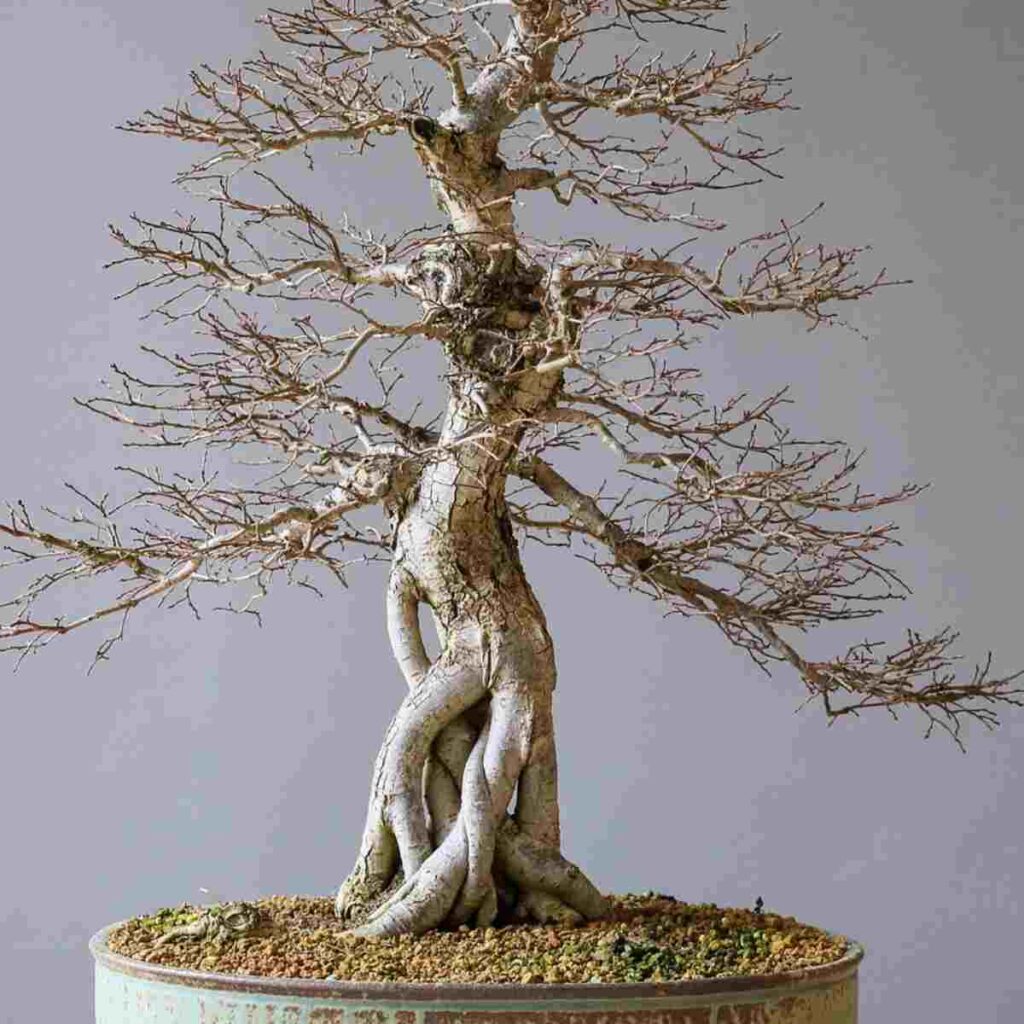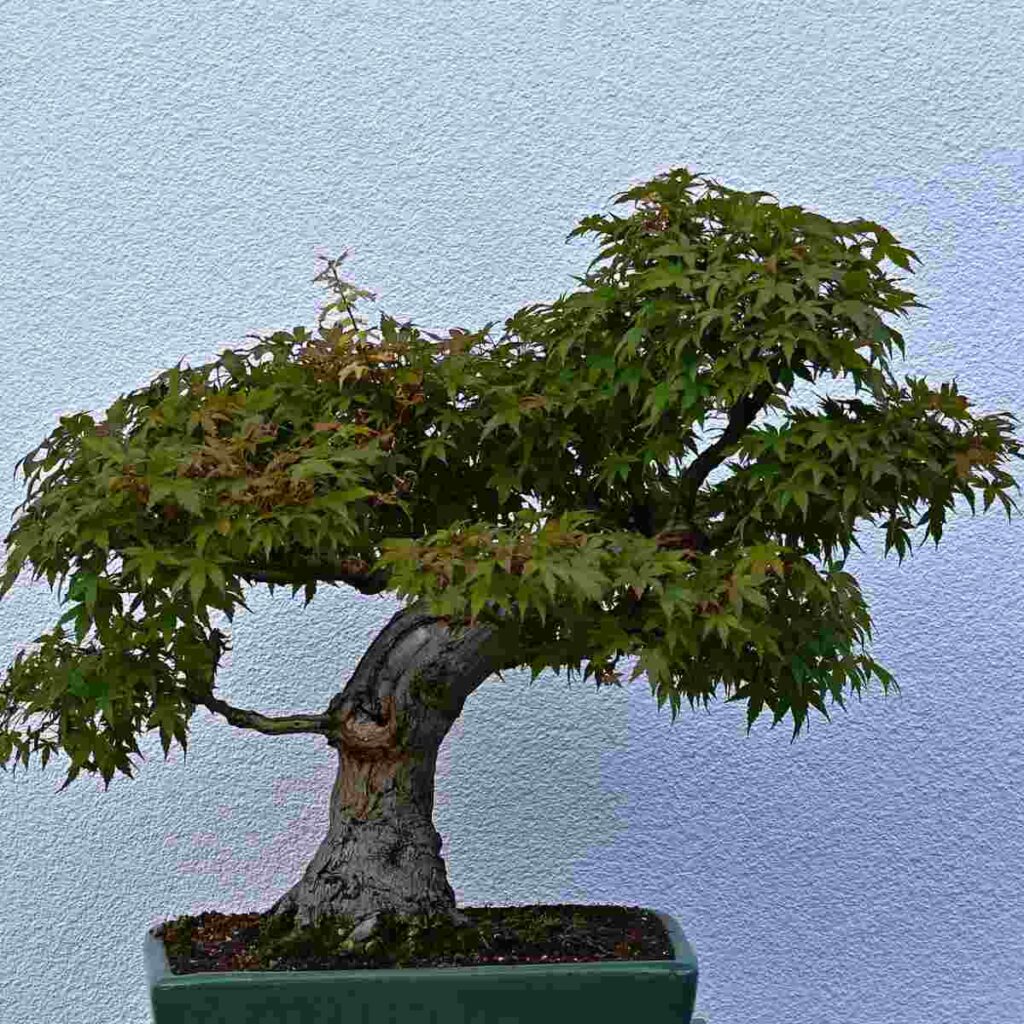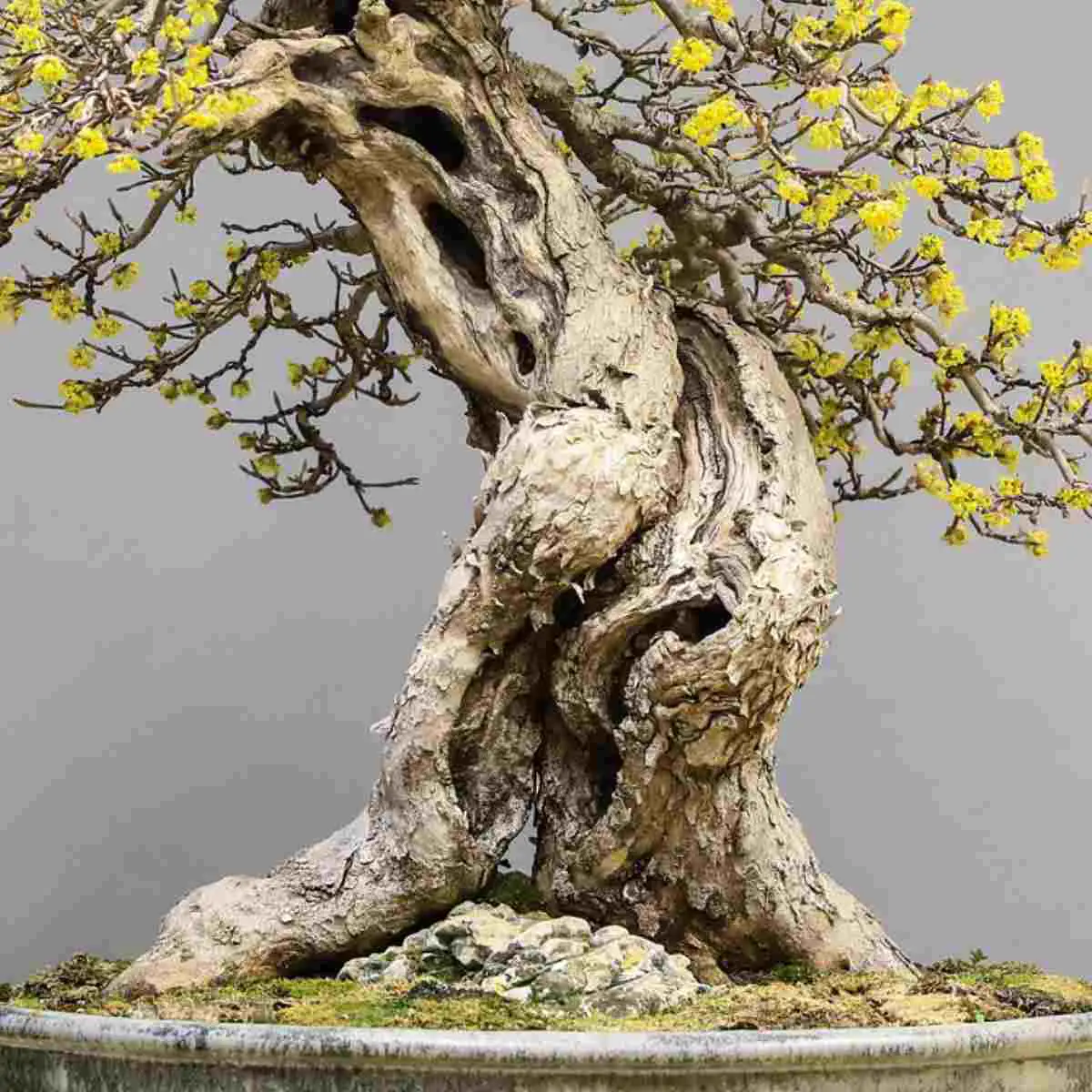The trunk makes up more than half of the bonsai tree. It is the most important part of a bonsai, and it must be both sturdy and healthy. Learning how to thicken a bonsai tree trunk is an investment that is well worth the effort. The six bonsai trunk thickening methods we will share here will help you to make a bonsai tree trunk thicker and tapered.
- Growing in the Ground
- Chopping Down the Trunk
- Sacrificial Branches
- Trunk Merging
- Split the Trunk
- Bend the Trunk
6 Bonsai Trunk Thickening Methods

Growing Your Bonsai Tree in The Ground:
There are several ways to grow a tree trunk thicker. One of them is to take your bonsai from its pot and plant it in the ground.
Once it gets used to the new environment, it will start growing rapidly. Once the tree trunk reached your desired thickness, you can replant it gradually in a bonsai container.
The problem with this method of trunk thickening is that the process can take years. If you want to use this method to thicken your bonsai trunk use a fast-growing tree species like Chinese Elm or Ficus.
Chopping Down The Bonsai Trunk:
This is one of the most popular methods of thickening a bonsai tree trunk.
When your bonsai tree has reached a height that you are happy with, make the first trunk chop. This is not the final cut.
You will let your tree grow after the cut. Continue to make more large cuts as the trunk thickens. Usually, 3-4 major cuts are quite normal to get a thick tapped trunk.
Remember this method will leave scars around your bonsai tree that might need several years to heal.
If you are planning to make a formal upright bonsai tree, it is best to not use this method of trunk tapering.
Sacrificial Branches Method:
While there are many techniques that focus on thickening your bonsai trunk, this one has become increasingly popular.
This technique focuses on growing a side branch near the base of the trunk. This branch will feed the trunk nutrients which will encourage the thickening of the tree trunk.
During the whole process, the side branch will grow out while the rest of the tree is pruned and kept restricted.
Once the tree trunk has reached the desired thickness, remove the sacrificial branch.
In this method, you don’t need to put the bonsai tree in the ground, so the method is great for people with limited space.
The biggest drawback of this method is when you remove the sacrificial branch it leaves a big scar on the trunk. You might need a few years to cover that scar.
Trunk Merging:
Merging bonsai trees is an effective way of creating one tree out of several. It’s also called trunk fusion and is used with fast-growing trees like Chinese elm and Ficus.
Trunk merging is one of the fastest and easiest ways to thicken a bonsai tree trunk.
In this method, you tie two or more small trees that will eventually merge into a single trunk.
Creating bonsai trees through merging is a challenging process.
You’ll need to be patient to allow the seedlings to fuse over time, before grafting.
If any of the saplings die during the fusion process, it can leave gaps in the trunk and lengthen the fusion time.
You’ll need to set aside a few seedlings to replace any dead trees.

Split the Trunk:
Bonsai trunk splitting is one of the quickest ways to thicken the trunk of your favorite bonsai.
But remember, not all trees will recover from such a trauma. Trees like Boxwood, Junipers, and Ficus respond very well to this technique.
First, take your bonsai tree out of its container, and gently wash away excess soil from the roots. Then use a trunk splitter, wood chisel, rotary tool, or saw to split your bonsai trunk from the bottom up.
Use wires or wood wedges to keep the split trunk apart.
To ensure proper healing, allow the roots of the break to grow freely. Immediately transplant it into a wide pot with fresh soil.
This will allow the roots to spread out and be able to take advantage of all the new nutrients.
Bend the Trunk and Side Branches:
This method of bonsai trunk thickening works best for trees with many branches. This method will give you a thick trunk without any scars.
Start with a small sapling, so the tree gets accustomed to being bent. It will be difficult to bend the trunk once the plant becomes a bit older.
In this method, simply bend the truck and the side branches together with wires. And with time both of them will swell together and will give your trunk a thick appearance.
Conclusion:
The task of thickening your bonsai’s trunk might sound a bit challenging, but it is not THAT difficult to accomplish. Sure you need a lot of patience, knowledge, love, and care for the tree – but the real secret is consistency.
I hope you learned something new in this post that will definitely help you thicken your bonsai tree trunk.
Thanks for reading.
